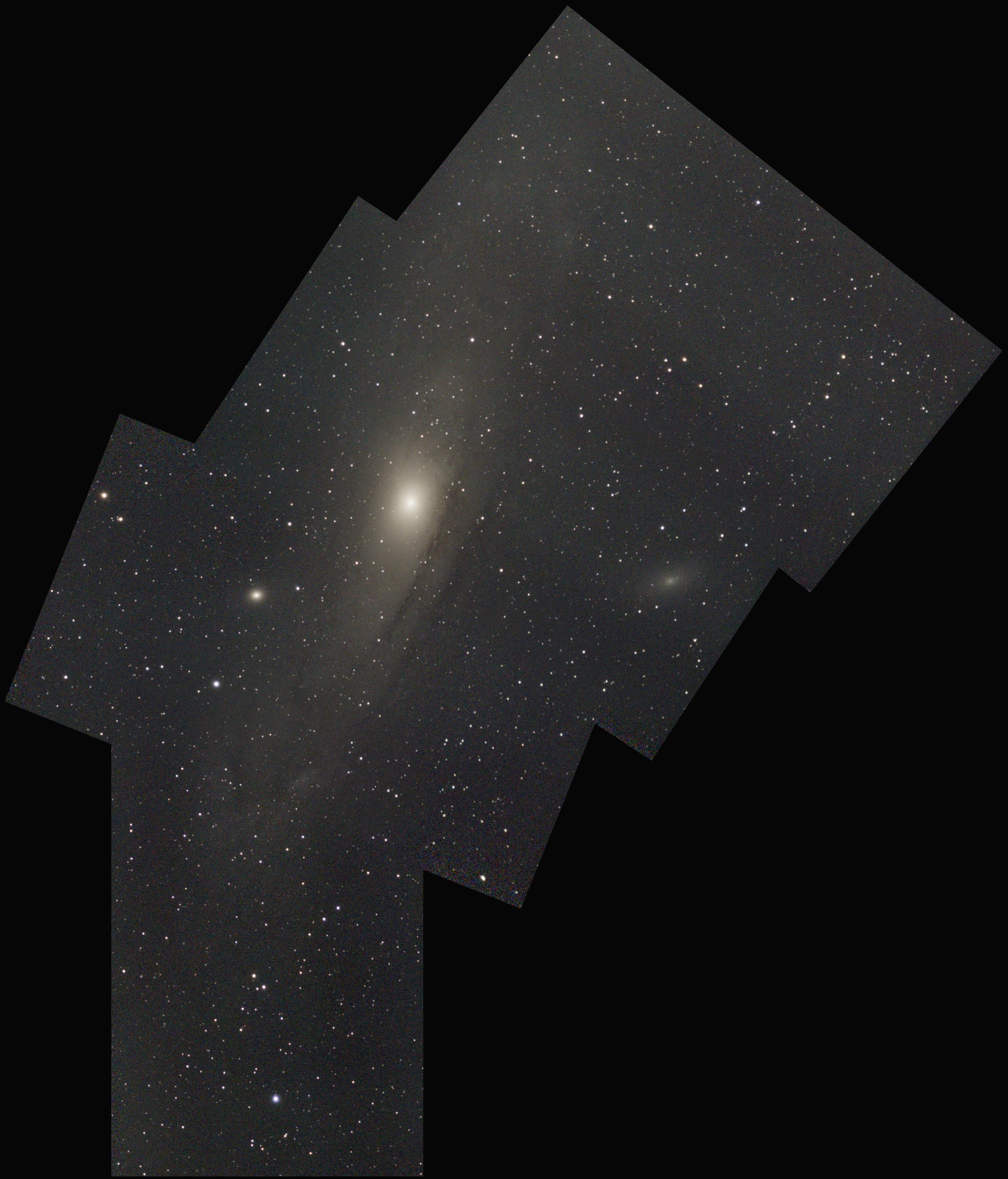OK, I promised to be more constructive in my critique, here is what I was expecting in terms of a mosaic feature:

This is M31, four individual 15-minute exposures, total telescope time 1h40m (60% stacking efficiency). Please ignore the overall quality of the image, this is just a quick and dirty proof of concept of the mosaic process - contrast this with the previous "M31 and trees" 2x mosaic produced by SeeStar in 5h40m and with 30% stacking efficiency the previous night. And yes, the APP tool I used to create this mosaic is not free, but nothing in life really is.
My point is that the S50 could do so much more with very little improvement to the software. It can already do the mosaic image registration, it can go to any RA/Dec coordinates (but only through a cumbersome manual process, how hard can it be to automate the process?), it can do 5 to 15 minute individual captures and save the FIT files with close to 80% efficiency. All that's needed is replacing the inefficient silly "spiral walk" with a series of short exposures and you would get a much more useful mosaic mode. And in the process you would get mosaics of any size and shape, not limited to 16:9 and 1x to 2x only, spread over multiple nights and not requiring the presence of a human being with phone in hand at all times. Not to mention that multiple users around the world could pool together their S50s and create amazing images very quickly this way. But this is thinking outside the box, something ZWO seems not willing to encourage.